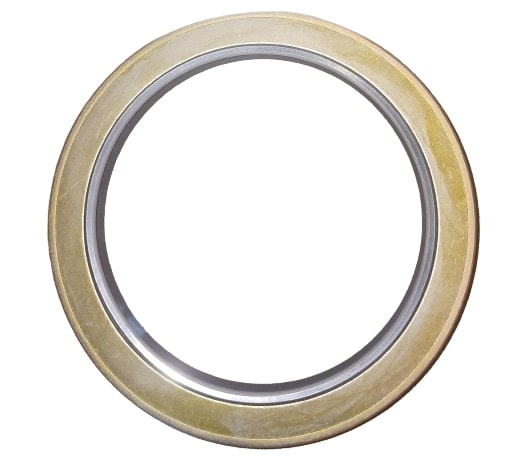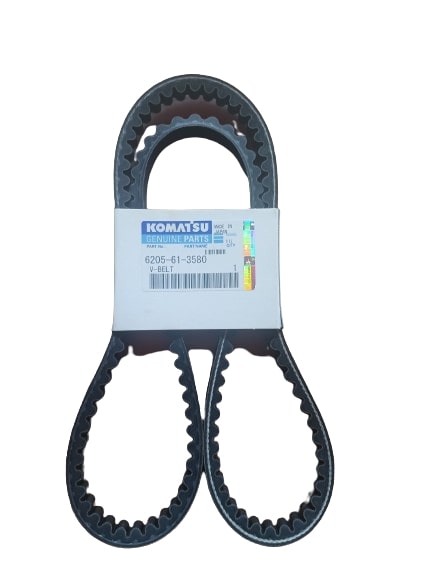Dismantled parts from PC200-8M0 C22176.
The Fuel Cooler Assembly of a Komatsu PC200-8M0 excavator is an important part of the fuel system designed to regulate the temperature of the fuel before it enters the engine. Its primary purpose is to ensure that the fuel stays cool and at an optimal temperature, which helps maintain fuel efficiency and protects the engine from the negative effects of overheating fuel.
Here’s a detailed description of the Fuel Cooler Assembly:
1. Fuel Cooler
- The fuel cooler itself is a heat exchanger that cools the fuel before it reaches the engine. It is typically a compact radiator-like component made of metal (often aluminum) that transfers heat from the fuel to the surrounding air or a cooling fluid.
- The cooler lowers the temperature of the fuel, which is essential for ensuring proper fuel injection and combustion in the engine. Fuel tends to heat up as it circulates through the fuel system, especially when it returns from the fuel injectors, so the fuel cooler prevents this excess heat from affecting the engine's performance.
2. Fuel Lines
- The fuel lines connected to the fuel cooler are responsible for transporting fuel to and from the cooler. Hot fuel from the engine is routed through these lines into the fuel cooler, and cooled fuel is returned to the fuel tank or delivered to the fuel injectors.
- These lines are made of materials that can withstand the high temperatures and pressures of the fuel system.
3. Mounting Brackets
- The mounting brackets secure the fuel cooler to the frame of the excavator. These brackets are designed to keep the cooler in place even during rough operations and provide stability to the fuel system.
- Proper mounting ensures that the fuel cooler functions effectively and is protected from vibrations or impacts.
4. Cooling Method
- The cooling method used by the fuel cooler in the Komatsu PC200-8M0 can either be air-cooled or liquid-cooled:
- Air-Cooled Fuel Cooler: Uses airflow, generated either by the motion of the excavator or by a dedicated fan, to dissipate heat from the fuel cooler’s metal fins. As hot fuel flows through the cooler, heat is transferred to the fins and dissipated into the air.
- Liquid-Cooled Fuel Cooler: Uses the excavator’s engine coolant or another liquid cooling system to cool the fuel. In this case, coolant passes through the fuel cooler in a separate circuit, drawing heat away from the fuel.
5. Heat Exchanger Design
- The fuel cooler functions as a heat exchanger, where heat from the fuel is transferred to either the surrounding air or coolant. It usually consists of fins and tubes or plates that increase the surface area for heat dissipation.
- This design ensures efficient cooling, preventing the fuel from becoming too hot as it returns to the fuel tank or is recirculated back into the engine.
6. Fuel Temperature Sensor (optional)
- Some fuel systems may include a fuel temperature sensor that monitors the temperature of the fuel entering or exiting the fuel cooler. If the fuel exceeds a certain temperature, the system may adjust the cooling process or alert the operator of potential overheating issues.
Function:
The main function of the Fuel Cooler Assembly is to lower the temperature of the fuel before it is either returned to the fuel tank or sent to the fuel injectors. This cooling is necessary for several reasons:
- Prevents Vapor Lock: Excessive heat can cause fuel to vaporize, leading to vapor lock (where fuel vapor blocks the flow of fuel). By keeping the fuel cool, the cooler ensures smooth fuel flow and prevents interruptions in engine operation.
- Maintains Fuel Efficiency: Cooler fuel is denser and combusts more efficiently, helping the engine operate optimally and reducing fuel consumption.
- Protects the Engine: High fuel temperatures can negatively affect engine performance and lead to issues like pre-ignition or injector damage. The fuel cooler helps protect the engine by ensuring that fuel is delivered at the proper temperature.
Operation:
- Fuel Circulation: As the fuel circulates through the fuel system, it absorbs heat from various components, particularly the injectors and fuel pump. The hot fuel is routed to the fuel cooler via fuel return lines.
- Cooling Process: As fuel passes through the fuel cooler, it loses heat to the surrounding air or cooling fluid, depending on the design. The heat exchanger facilitates this process, ensuring the fuel exits the cooler at a lower temperature.
- Fuel Delivery: The cooled fuel is either returned to the fuel tank or directed to the injectors for use in the engine.
Benefits:
- Improved Engine Performance: By ensuring that the fuel temperature remains within optimal ranges, the fuel cooler helps the engine run more efficiently and reliably.
- Extended Engine Life: Proper cooling of the fuel prevents overheating-related damage to engine components, such as fuel injectors and combustion chambers.
- Fuel Efficiency: Cooler fuel burns more efficiently, improving fuel economy and reducing emissions.
- Prevents Fuel Vaporization: Helps prevent vapor lock, ensuring a continuous flow of fuel to the engine, especially in high-temperature environments or during heavy-duty operations.
Importance:
In modern excavators like the Komatsu PC200-8M0, the Fuel Cooler Assembly plays an essential role in maintaining the machine's overall efficiency and reliability. The diesel fuel system in such equipment generates heat during normal operation, and without a proper cooling system, the performance and longevity of the machine could be compromised.





